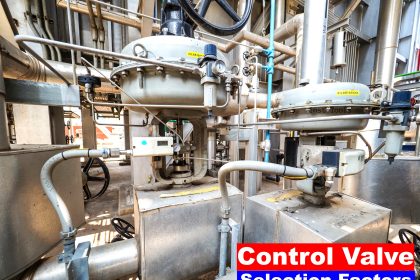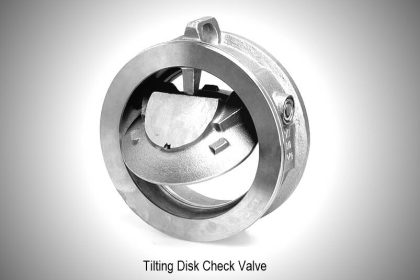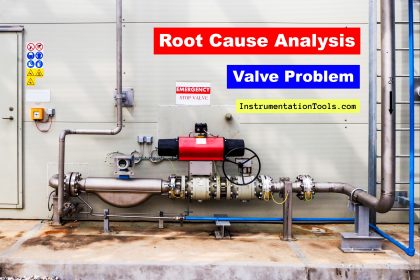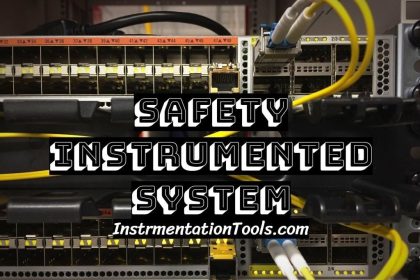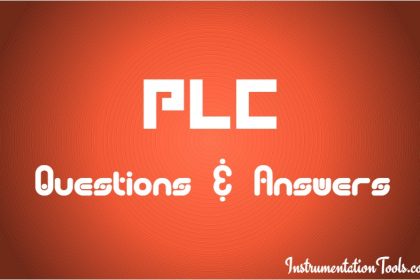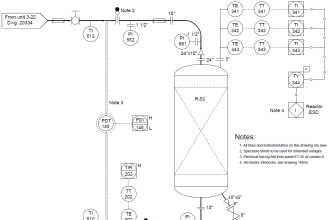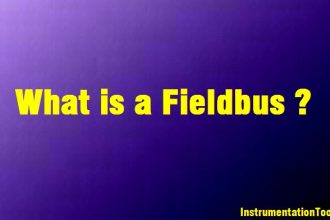Discuss about Valves Pressure Loss and questions and answers on valves. Valve Technician interview questions and answers.
Valves Pressure Loss – Questions and Answers
Explain Valve Flow Coefficient Definition
When flow goes through a valve or any other restricting device it loses some energy.
The flow coefficient is a designing factor which relates head drop (Δh) or pressure drop (ΔP) across the valve with the flow rate (Q).
Each valve has its own flow coefficient. This depends on how the valve has been designed to let the flow going through the valve. Therefore, the main differences between different flow coefficients come from the type of valve, and of course the opening position of the valve.
Flow coefficient is important in order to select the best valve for a specific application. If the valve is going to be most of the time opened, probably there should be selected a valve with low head loss in order to save energy.
Or if it is needed a control valve, the range of coefficients for the different opening positions of the valve should fit the requirements of the application.
At same flow rate, higher flow coefficient means lower drop pressure across the valve.
Depending of manufacturer, type of valve, application the flow coefficient can be expressed in several ways. The coefficient can be non-dimensional or with units if parameters such as diameter or density are considered inside the coefficient or just in the equation.
Most of valve industry have standardized the flow coefficient (K). It is referenced for water at a specific temperature, and flow rate and drop pressure units. Same model valve has different coefficient for each diameter.
Kv is the flow coefficient in metric units. It is defined as the flow rate in cubic meters per hour [m3/h] of water at a temperature of 16º celsius with a pressure drop across the valve of 1 bar.
Cv is the flow coefficient in imperial units. It is defined as the flow rate in US Gallons per minute [gpm] of water at a temperature of 60º fahrenheit with a pressure drop across the valve of 1 psi.
Kv = 0.865 · Cv
Cv = 1,156 · Kv
At valves which discharge the flow directly into the environment it is used the non-dimensional Discharge Coefficient(C).
2. What does Cv factor mean?
The definition of Cv factor is the number of U.S. gallons per minute that will pass through a valve with a pressure drop of one (1) PSI.
This ‘factor’ is determined by physically counting the number of gallons that pass through a valve with one (1) PSI applied pressure to the valve inlet and zero (0) pressure at the outlet. Cv is a mathematical constant. For a pressure drop other than one (1)PSI, use the formula in answer number 10 below.
3. Does every valve have a Cv factor?
No. Cv factors typically apply to full open/full closed shut-off valves such as solenoid valves, ball valves, etc.; Valves that are held open without aid of liquid pressure in the pipeline.
4. Which valves do not have a Cv factor?
Cv factors typically do not apply to modulating or regulating valves, spring loaded check valves, etc., that incorporate a control spring since more than one (1) PSI is required just to begin to position such valves.
5. What is Delta P?
A commonly used term, Delta P or its symbol usually refers to the pressure drop across a piping component such as a valve or filter.
(from the Greek Delta) is the ‘change’ in something; in this case a change, or drop, in pressure. To determine the Delta P across a valve, simply subtract the outlet pressure (P2) from the inlet pressure(P1). The equation is
ΔP = P1 – P2

6. Why is pressure drop important?
Pressure drop is a critical element in valve sizing and valve application. Pressure drop must be known by the engineer designing the system to ensure proper valve selection.
7. What factors determine pressure drop across a valve?
The most critical factors are the orifice size and internal flow path. An example would be a full port/full open 1″ ball valve with a typical Cv of 40 versus a full open 1″ diaphragm valve with a typical Cv of 15.
8. What is Backpressure?
Backpressure is simply defined as the pressure found at the outlet or “back” of a valve. It is caused by downstream restrictions.
9. What creates backpressure & why is it important to know?
Resistance to flow in piping systems creates backpressure. Piping components such as spray nozzles, filters and reducing fittings can all contribute to both backpressure and pressure loss.
It is important to know the backpressure present (or potential) in a piping system when installing or specifying a valve since many valve designs can be adversely affected if their maximun ratings are exceeded.
10. What is the relationship between the flow rate (GPM) and pressure drop?
Pressure drop and flow rate are dependent on each other. The higher the flow rate through a restriction, such as a valve, the greater the pressure drop. Conversely, the lower the flow rate, the lower the pressure drop.
11. How do the GPM, Cv factor, and Delta Pressure work together to size a valve?
At least two of these elements are necessary to properly specify a valve. Here are the flow formulas.

12. Explain about Types of Valves & Types of Actuators?
Types of Valves
The operative of the valve closure member
Multi-turn valve (linear motion valves):
- The closure member has a linear displacement generally by turning its threaded stem several times.
- This operation is slow, but it gives accuracy and stability to position the closure member, which is necessary in some control valves.
- Types of valves: Gate valve, Globe valve, Fixed cone valve, Needle valve and Pinch valve.
Quarter-turn valve (rotary valve):
- The closure member as well its shaft turn 0º – 90º; from the fully-open position to the fully-closed position.
They are quick opening/closure valves. - Types of valves: Ball valve, Butterfly valve, Plug valve, Spherical valve.
The functionality of the valve
- Control: pressure / flow rate regulation.
- Closure at over-speed flow. (i.e. immediate closure if downstream pipeline is broken by accident).
- Overpressure protection.
- Back flow prevention (check valve).
- On/Off service.
The nature and physical conditions of the flow
- Low/High temperatures.
- Low/High pressures.
- Cavitation risk.
- Corrosive or erosive properties of the flow.
- Viscosity: Gas, liquid, solid.
- Hygiene requirements (for the food or pharmacy industry…).
- Explosion and risk of inflammability (chemical, petrochemical industry).
Other forms of valve classification
- Admissible leakage level.
- Connection to the pipe.
- An unique direction of the flow or bidirectional flow.
- Number of ports: most of the valves have two port, named inlet and outlet port. But for same applications there are multi-port configured valves. They can be three-way and four-way valves.
- Angle between the inlet and outlet port of the valve.
Also Read : Solenoid Valve Troubleshooting Practices
Types of Actuators
Actuators for valves can be classified up several characteristics:
By the type of movement
- Multi-turn.
- Quarter-turn.
- Linear.
- Lever.
By the energy source
- Manual
- Electric: they can be derived by direct and alternate current.
- Pneumatic: they use pressured air or gas to create motion. They are widely used in the industry due to their low cost. In case of failure they are easy to diagnose or repair in field, rather than electric actuators.
- Oleo-Hydraulic
Functionality
- On / Off valve service
- Positioning to % open
- Modulating to control changes on flow conditions
- Emergency Shut Down (ESD)
Other characteristics
- Explosion-proof
- Safety integrity level (SIL)
- Enclosure: IP and NEMA.
Also Read: Questions & Answers on Valves


